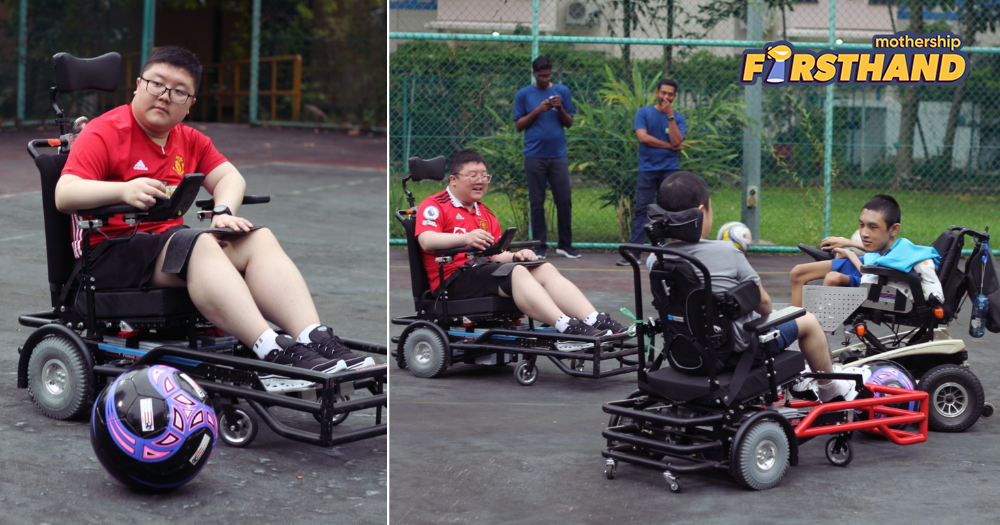When Argentina bested reigning champion France during the 2022 World Cup final, the Lusail Stadium erupted into deafening cheers.
It'd been a nail-biting fight, both sides refusing to let either lead on the scoreboard hold.
Argentina sealed its fate when it scored the winning goal during the penalty kick shootout, clinching the team's third World Cup title.
Ringed by jubilant teammates, Lionel Messi of Argentina hoisted the World Cup trophy and basked in the glory of being the tournament's MVP.
Back in Singapore, a wide-eyed Edmund Tan sat watching his hero's historic victory play out on the television screen.
The young boy himself had picked up soccer just three years before. He’d set out to mirror his hero on the field — to dribble, run, and feint like Messi.
It didn’t matter that he would be doing so sitting down.
A different sportsman
Tan was diagnosed with Duchenne Muscular Dystrophy (DMD) when he was just three years old.
DMD is a genetic disorder characterised by progressive muscle degeneration and weakness. It has no cure.
The disorder left Tan wheelchair-bound for life, but it never turned him away from his dreams of the soccer field.
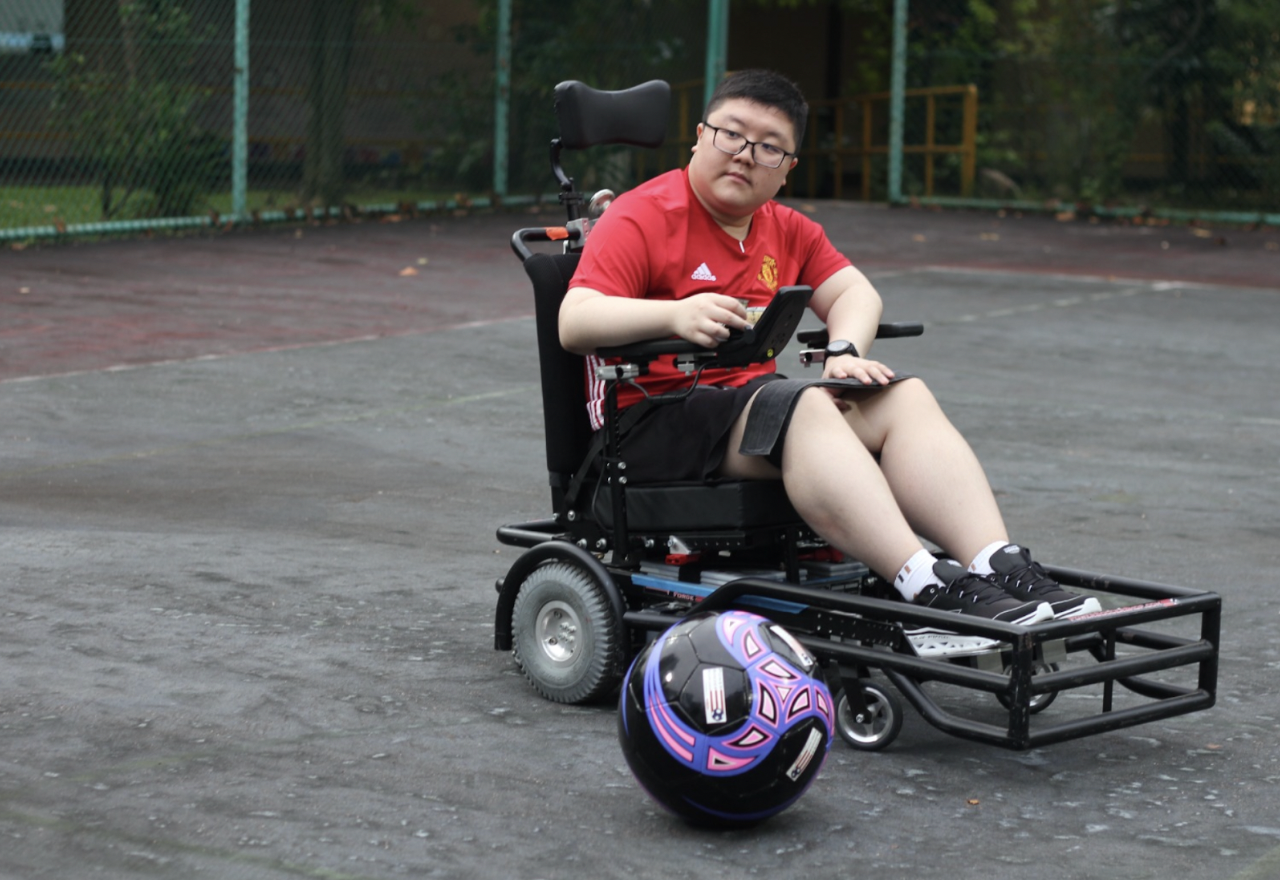 Photo courtesy of MDAS
Photo courtesy of MDAS
Scoring a goal is — admittedly — easier pictured in the mind than in reality.
Back then, Tan could only play the role of spectator, and imagine himself racing alongside his idol on the field.
“I felt disappointed as I couldn’t play soccer, only watch other kids playing. I eventually gave up hope.”
It wasn’t until Tan turned 19 that he found a concrete way to pursue his dream.
He was introduced by the Muscular Dystrophy Association (MDAS) to power soccer, an adaptation of soccer catered to players with severe muscular degenerative conditions who rely on wheelchairs for day-to-day living.
There is only one local team currently in existence: the Singapore Rollers.
A different ball game
Stepping into the lobby of the HWA (formerly known as the Handicaps Welfare Association) headquarters on Mar. 26, 2024, I follow a side path leading to its outdoor basketball court, where I hear the faint whirring of motorised wheelchairs.
A power soccer match is in session.
The way the sport is played, two teams are pitted against each other. Each team is made up of four players, including a goalkeeper.
Each player sits atop a customised wheelchair that can go up to 10km/h, outfitted with a metal guard that allows them to hit a soccer ball the size of a beach ball.
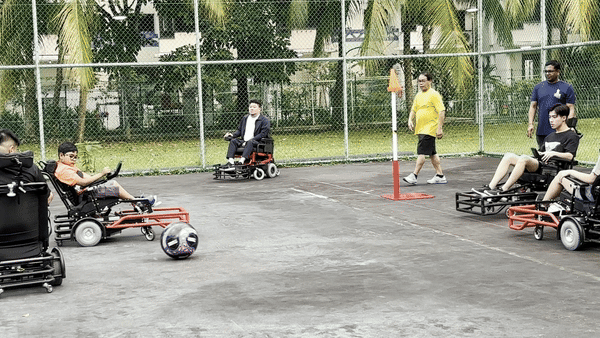 Gif by Julia Yee
Gif by Julia Yee
The essence of the game, like soccer, boils down to one simple aim: Get the ball between the goalposts.
Never alone
Tan, now 23, admires Messi's speed and agility. Watching the soccer star in action on the field is extremely exciting, he tells me.
A similar sense of anticipation grips me as I settle down to watch the game.
For the Rollers, the excitement comes less from complicated hat tricks or roaring hurrahs, but from the silent teamwork that comes into play.
This is a different type of dance, a more subdued one that hinges on instinctive yet calculated coordination.
Hand on the joystick of their wheelchairs, players glide skilfully across the court. They use hand gestures to relay their intentions and rely on the familiarity of their opponent's driving habits to intercept but not collide.
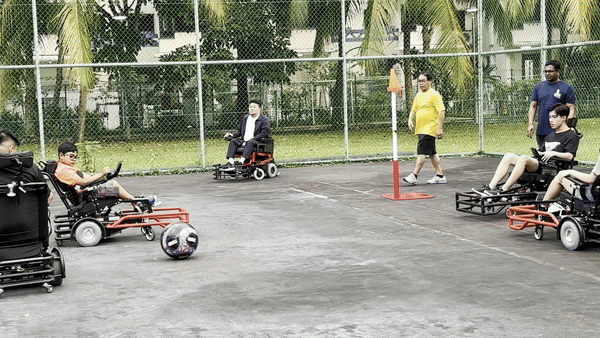 Gif by Julia Yee
Gif by Julia Yee
Not many words are uttered between the players, but make no mistake — this isn't a solo game.
"It's about the ability to understand gameplay and understand your team," the team's coach Judy Wee pipes up from beside me.
To score a goal, Wee explains, a player needs to make a "complete swing" on their wheelchair. This means that another player needs to feed them the ball before they can swing and take their shot.
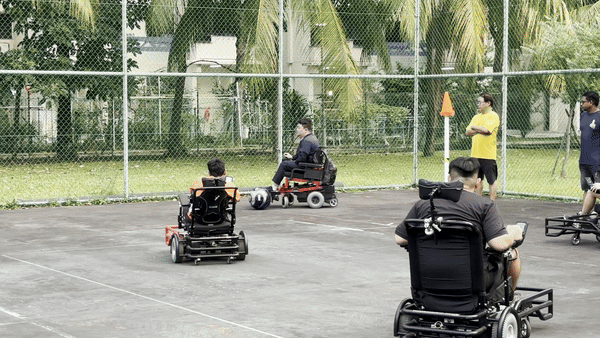 Gif by Julia Yee
Gif by Julia Yee
In other words, you can’t stay closed off to win. You reach out, show you’re open, and work together to score.
“You should have seen them fly.”
Not everyone is cut out to handle the hefty power soccer wheelchair or dexterous enough to use it as an extension of one's body.
"It was hard to pick up at first, due to my lack of experience with handling a wheelchair. I was using a motorised scooter back then," Tan says.
But contrary to what its bulk might lead one to assume, this wheelchair offers players a taste of freedom.
"It feels lighter and not as restrictive compared to my normal wheelchair."
These qualities enable Tan to dribble while weaving between defenders "with a fast pace and ball control”.
“Just like Messi!" he quips.
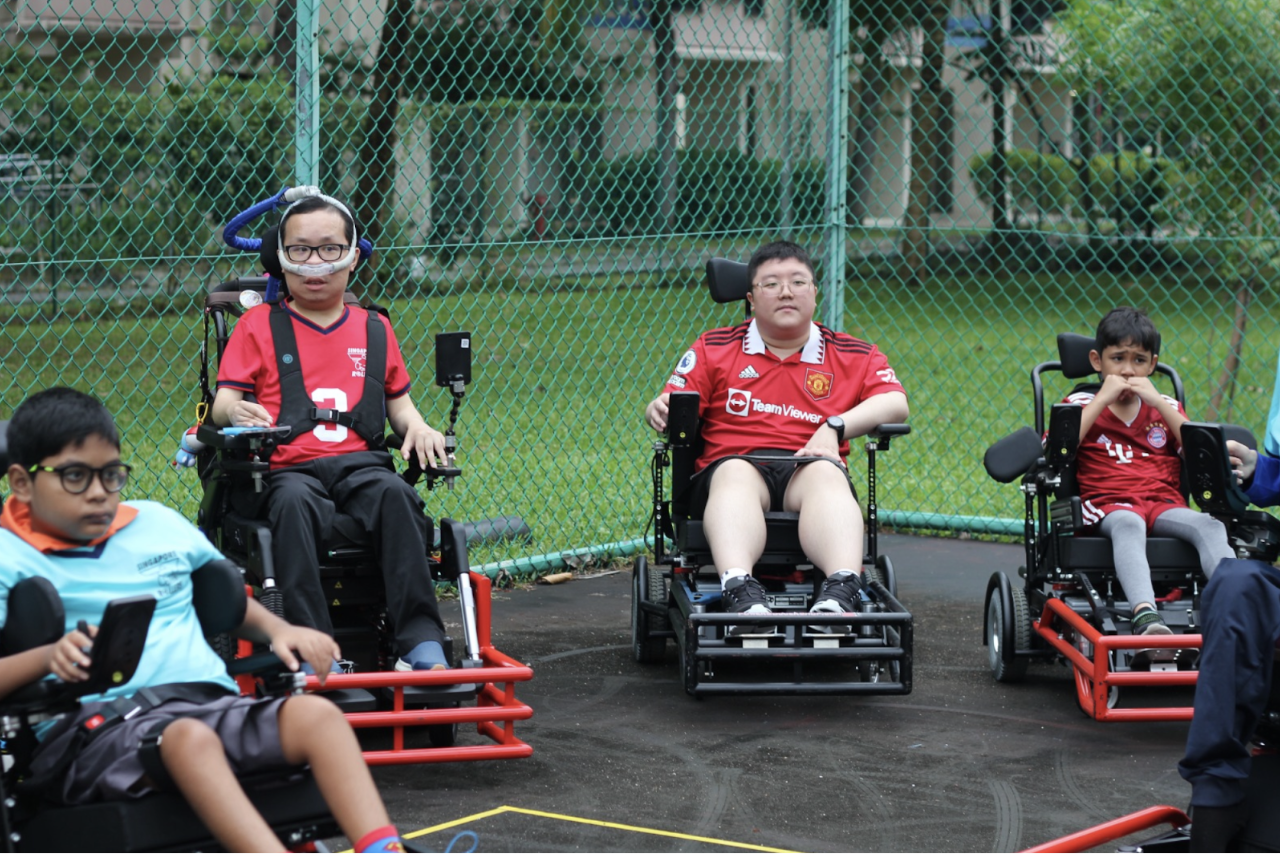 Photo courtesy of MDAS
Photo courtesy of MDAS
It’s a freedom that is made sweeter because, for these players, it comes with an expiration date.
"The first group that started playing has retired. Their conditions weakened to the point where they couldn’t play anymore," Wee says sombrely.
Sitting in her wheelchair, Wee stares at the match unfolding before her, but she seems to be seeing another scene entirely.
Eyes glinting, she breathes:
“You should’ve seen them run. You should’ve seen them fly.”
The falls
Amid the mistakes and wrong calls on the court, I expect Wee to play the role of a tough coach.
So I'm surprised that when the players fail to steal the ball or score an easy goal, Wee responds by calling out, “Don’t overdo yourself!”
It soon becomes clear why.
The match lasts for 40 minutes with a 10-minute break in between. Even so, some players don't last long enough to make it to halftime.
One player, a 12-year-old boy, requests a time-out because he feels unwell, moving off the court to rest.
A nurse on standby proceeds to measure his vital signs with an oximeter. I overhear that his heart rate has risen to an alarming 140bpm.
Judging from the lack of people freaking out around me, issues like this seem to be commonplace during power soccer matches, and players just need to take a break and recuperate.
Nevertheless, Wee reminds the rest of the team to take it easy.
I turn back to the game, trying to remember who's in the lead. That's when it dawns on me — no one’s been keeping score.
"It’s good to see them having fun," says Wee with a grin.
This session is not about pushing one’s limits; it's not about crowning the MVP or taking home a trophy.
It's about being in the moment — laughing with friends and going faster than you ever thought you could — and relishing the freedom it brings.
Some might look at this lack of competitiveness or training rigour and argue that power soccer isn’t a real sport.
Tan has a simple answer for the naysayers: “Let them be.”
Leaving the sidelines
The team's optimism is admirable, but it can't hide their dwindling numbers.
Case in point, my invitation to watch their game was rescheduled twice because they did not have enough players for a four-versus-four match.
"The pandemic had a way of making the players weaker," Wee admits to me.
They try to meet regularly, but there isn’t always a good turnout, maybe five to six "on a good day".
This raises questions about the sport’s longevity, especially with it having nowhere near the same reach or commercial value as regular soccer.
It's a concern that nags at the back of Tan's mind as well. He wonders if power soccer will "die off", considering this is the only team in Singapore.
He’d feel sad if that happens, he admits, but he’ll “find something else to do”.
I’m not sure if there’s another sport out there that can bring him as much joy. But then again, maybe it’s not so much about the sport itself, but its spirit that's worth preserving.
Power soccer shows people with severe disabilities that they can leave the stands and enter the playing field, both in sports and in life.
“Nothing is impossible,” Tan tells me earnestly.
Playing the game was what these players always dreamed of, but never had the chance to do until power soccer came along.
For a long time, the next best thing was to "watch other people play".
Watch other people run.
Watch other people score.
Watch other people live.
In 2022, Tan sat watching his hero win the World Cup, just as he’d sat watching every single one of Messi's victories before.
But no more watching from the sidelines. Now, he plays.
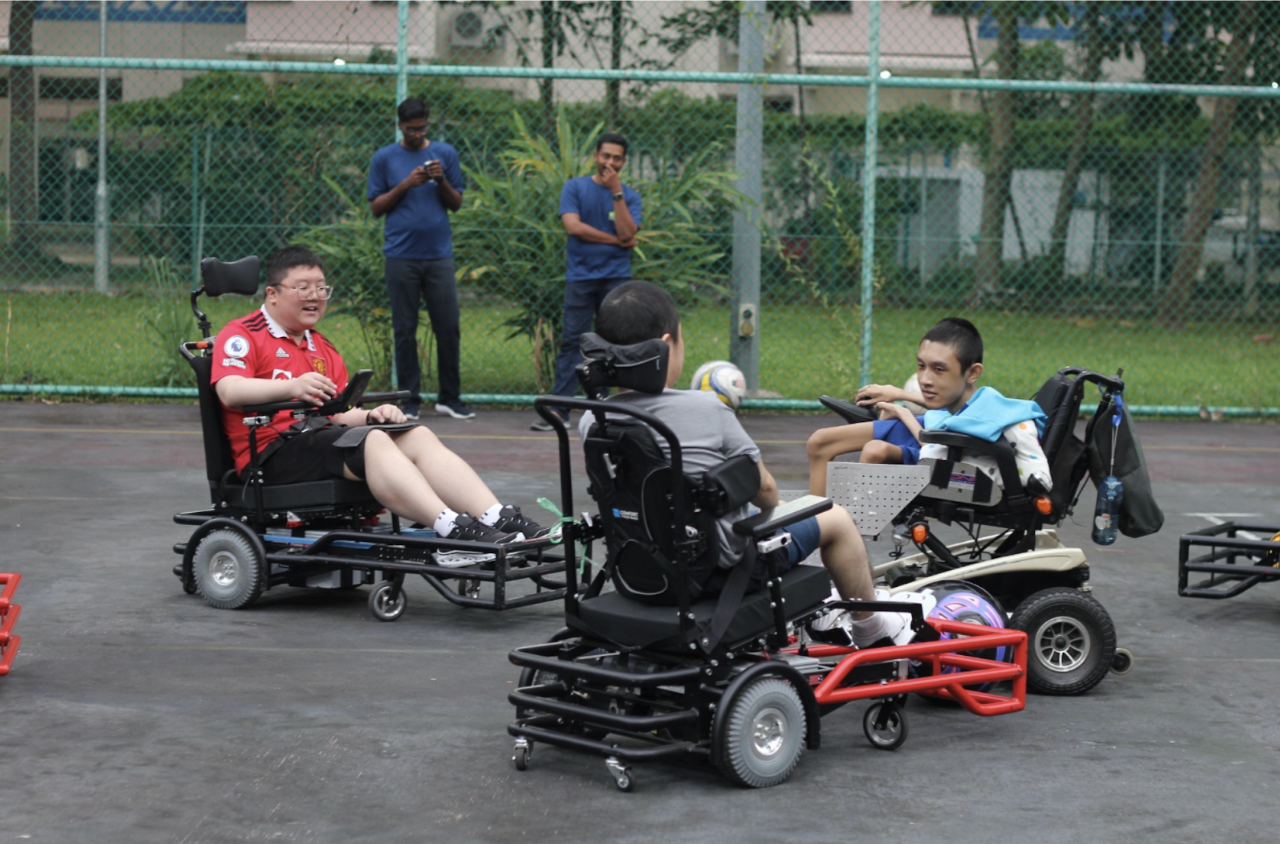 Photo courtesy MDAS
Photo courtesy MDAS
Top images courtesy of MDAS
If you like what you read, follow us on Facebook, Instagram, Twitter and Telegram to get the latest updates.

